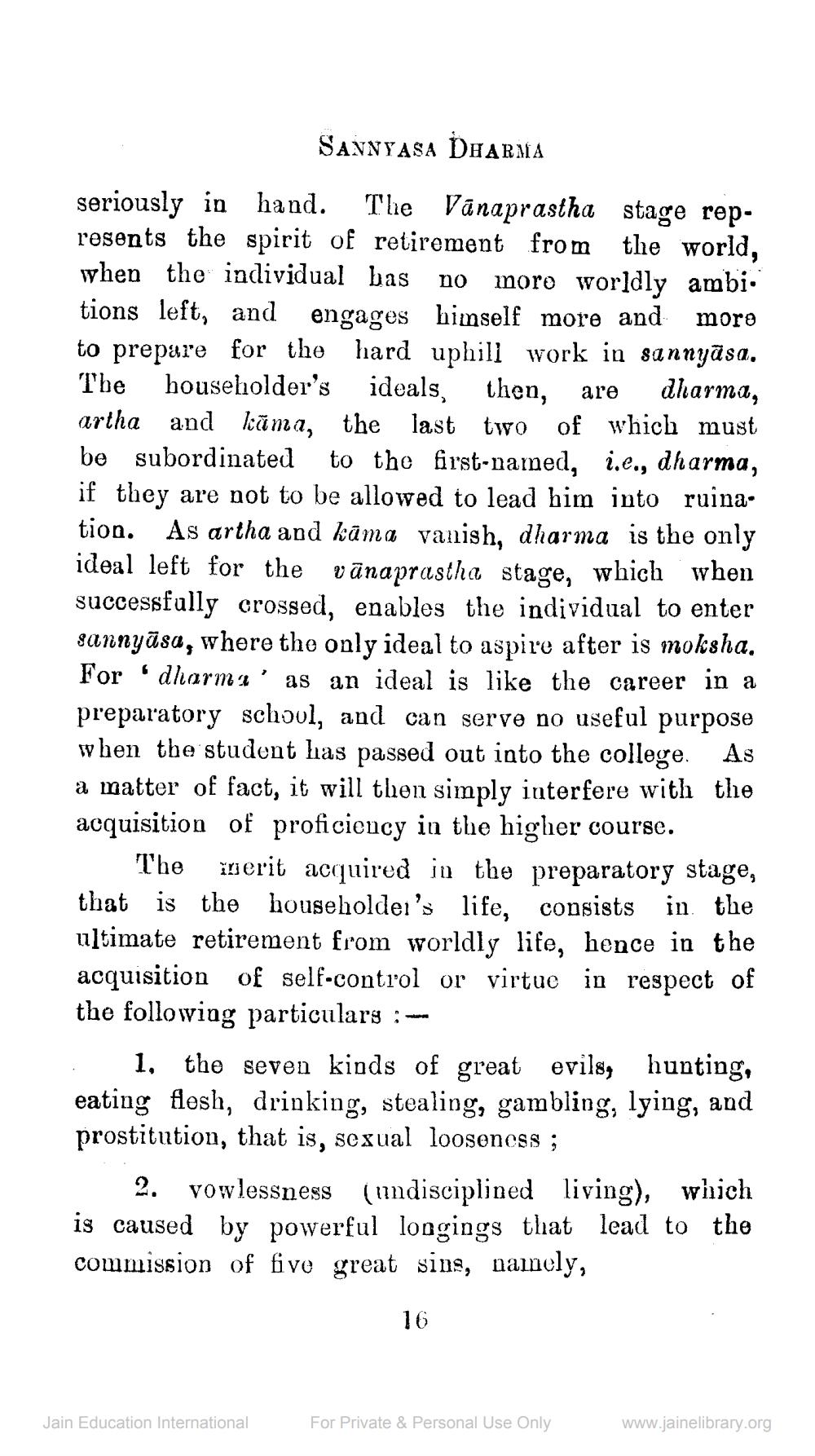________________
SANNYASA DHARMA
seriously in hand. The Vânaprastha stage represents the spirit of retirement from the world, when the individual bas no more worldly ambi: tions left, and engages himself more and more to prepare for the hard uphill work in sannyāsa. The householder's ideals, then, are dharma, artha and kāma, the last two of which must be subordinated to the first-named, i.e., dharma, if they are not to be allowed to lead him into ruination. As artha and kūma vanish, dharma is the only ideal left for the vānaprastha stage, which when successfully crossed, enables the individual to enter sannyāsa, where the only ideal to aspire after is moksha. For dharmz' as an ideal is like the career in a preparatory school, and can serve no useful purpose when the student has passed out into the college. As a matter of fact, it will then simply interfere with the acquisition of proficiency in the higher course.
The merit acquired in the preparatory stage, that is the householdei's life, consists in the ultimate retirement from worldly life, hence in the acquisition of self-control or virtue in respect of the following particulars :: 1. the seven kinds of great evils, hunting, eating flesh, drinking, stealing, gambling, lying, and prostitution, that is, sexual looseness ;
2. vowlessness (indisciplined living), which is caused by powerful loogings that lead to the commission of five great sins, namely,
16
Jain Education International
For Private & Personal Use Only
www.jainelibrary.org




